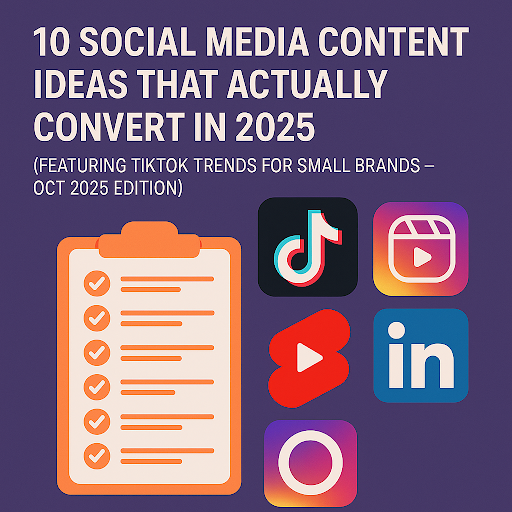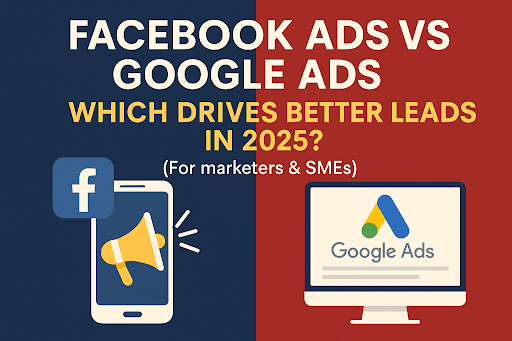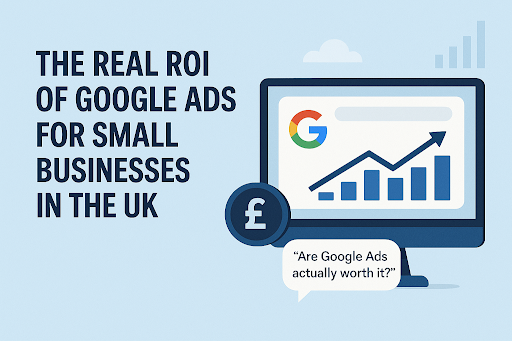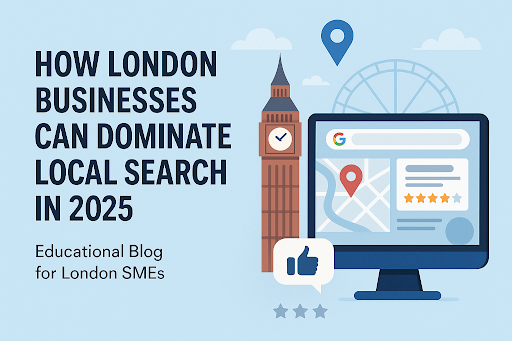
March 24th, 2025


Written by Bobby Abrams
In today’s fast-paced digital landscape, effective Google Shopping management can make the difference between stagnation and explosive growth for your business. We understand that transforming your approach to Google Shopping means integrating complex data streams, automation tools, and strategic expertise into one seamless process. In this blog, we’ll dive deep into the integrated management techniques that drive peak efficiency and enduring growth, sharing practical insights with a personal touch based on our years of experience in digital marketing.
Google Shopping has evolved from a simple listing tool to a powerful revenue driver for e-commerce brands. Unlike traditional search advertising, Google Shopping blends product visuals, prices, and seller information into a single engaging format that attracts high-intent buyers. However, making the most of this platform requires more than just creating ads—it demands an integrated management approach that coordinates strategy, operations, and technology.
Our experience has taught us that integrated management techniques are not just about managing campaigns, but also about aligning every strategic initiative under a single cohesive framework. This approach helps businesses:

When we talk about integrated management techniques for Google Shopping, the benefits become immediately apparent. By weaving together data, creative insights, and technical expertise, you can not only enhance campaign performance but also unlock sustainable growth. Here’s how this integration works:
Data is the backbone of any successful digital marketing campaign. However, when data sources are siloed, making informed decisions becomes a challenge. Here’s how an integrated approach redefines your data strategy:
With a single dashboard that aggregates performance metrics from various channels, you can quickly identify trends and adjust strategies in real time.
Key performance indicators (KPIs) tailored to your business needs, such as conversion rates, revenue increases, and ad spend efficiency, drive better decision-making.
Access to immediate insights allows you to pivot strategies on the fly without waiting for daily or weekly reports.
This approach eliminates the guesswork and helps in maintaining continuous optimization. It’s not uncommon for our clients to experience a 145% increase in revenue within three months when such strategies are put into practice
No two businesses are alike, and a one-size-fits-all approach rarely delivers. Working closely with dedicated project managers and specialists ensures that your Google Shopping campaigns are aligned with your specific business goals. With this tailored approach:
Every client receives a unique campaign plan based on in-depth market research and brand positioning.
Our team of Google Shopping specialists, e-commerce managers, and PPC experts ensure that each strategy is executed flawlessly, reducing the risk of wasted ad spend by up to 40%.
With constant monitoring and iterative improvements, the campaigns stay ahead of market changes and competitor shifts (without mentioning names, we simply focus on your success).

The integration of automation into your Google Shopping campaigns is a game-changer. Rather than manually updating bids and adjusting creatives, automated tools can:
Automation continuously adjusts bids based on performance, ensuring that you always pay the right amount for each click.
Run A/B tests across multiple ad creatives, allowing you to learn which images and messages resonate most with your audience.
Automated systems refine your audience segments, ensuring that your ads reach potential buyers who are most likely to convert.
Not only does this reduce the manual workload, but it also accelerates the optimization process, leading to rapid improvements in efficiency and performance.
Based on our extensive experience in digital marketing, we have identified several strategies that, when integrated, yield tremendous results in Google Shopping campaigns. These strategies are designed to work in harmony to optimize every aspect of your campaign management.
Before implementing any integrated strategies, it’s essential to understand the current state of your campaigns. Our comprehensive audits include:
These audits lay the foundation for a clearly defined action plan. At EClickPro, every client can request a 24-hour audit, giving you immediate insights into the opportunities waiting to be unlocked.
The power of an integrated strategy lies in its ability to harmonize various digital channels. While Google Shopping is the focus here, its success often hinges on complementary digital marketing efforts such as SEO, PPC, and Email Marketing. Here’s how to ensure consistency across channels:
Ensure that your brand message remains consistent across all digital channels, reinforcing your identity and value proposition.
Use insights from one channel (like SEO keyword performance) to enhance bidding and targeting in your Google Shopping campaigns.
Consolidate your campaign data so that you can analyze results holistically, rather than in isolated silos.
Digital marketing is an ever-evolving field. To stay ahead, your management techniques must include provisions for continuous learning and adaptation. Here are a few ways to implement this:
Schedule frequent reviews to evaluate what’s working and what needs change. These reviews should be data-driven and include a clear plan for iterative improvements.
Keep an eye on emerging trends in both the digital marketing landscape and consumer behaviors. Use these insights to adapt your strategy before opportunities are lost.
Ensure that your team stays updated with the latest tools and techniques. An informed team can pivot quickly and implement best practices seamlessly.
One of the core components of integrated management is technology. By harnessing the latest tools and platforms, you can turn raw data into actionable insights and automate tasks that traditionally consumed valuable time. Below are some technological integrations that make a significant impact:
Modern analytics platforms go beyond simple metrics and delve into behavioral insights. With advanced analytics, you can:
Identify which customer segments are performing best and allocate your resources accordingly.
Trace every step a customer takes from clicking an ad to completing a purchase, identifying any roadblocks in the process.
Leverage split-testing tools to continuously experiment with different creative elements and bidding strategies.
By automating repetitive tasks and decision-making processes, you free up valuable resources for strategic planning. Automation can help you:
Automatically adjust bids based on real-time performance data, ensuring that your spending is always optimized.
Use algorithms to rotate ad creatives and maintain freshness in your campaigns.
Dynamically adjust budgets across campaigns to support the best-performing ad groups without manual intervention.
Integration of these technologies produces a synergistic effect: not only are campaigns more efficient, but they also evolve as market conditions change, ensuring long-term growth and stability.

Let’s explore a practical, step-by-step plan for integrating these techniques into a robust management strategy for Google Shopping:
Begin by conducting a thorough audit of current campaign performance. This process should include a review of digital assets, existing bid strategies, product feeds, and overall ad performance. A clear picture of where you stand provides the baseline for all further actions.
Once the audit is complete, the next step is integrating your technology stack. Ensure that your analytics, reporting, and automation tools are connected. This integration allows for a seamless flow of data and better insight generation.
With data in hand and technology in place, work with your dedicated team to craft a tailored strategy that reflects your business goals. This strategy should include:
Deploy your integrated strategy and ensure that continuous monitoring is set up to track progress. Regular check-ins and performance reviews allow for dynamic adjustments that keep your campaign on track.
Even after your campaign is running, the work is not done. Optimization is an ongoing process. Implement periodic strategic reviews to adapt to new trends, update your product feeds, and recalibrate your KPIs as needed.
While technology and automation are critical, the human element remains essential to truly transform your Google Shopping campaigns. This is why we ensure that:
This personal touch ensures that you always have expert guidance when making strategic decisions.
We meet with clients frequently to discuss insights, challenges, and the next steps based on data-driven findings.
Combining years of experience with technical expertise, we tailor recommendations to meet the unique challenges of your business.
This blend of advanced tools with human expertise creates a dynamic environment where automation is fine-tuned by personal insights. The result is a finely balanced system that adapts, learns, and grows with your business.
As technology continues to evolve, integrated management for Google Shopping will only become more sophisticated. We anticipate that future developments may include:
With machine learning becoming more mainstream, expect more refined bid optimization and audience segmentation capabilities that predict trends before they occur.
As digital marketing channels converge, the ability to merge data and insights across platforms will become even more critical for maintaining a competitive edge.
Future analytics platforms may offer hyper-detailed insights, allowing marketers to understand every nuance of consumer behavior and campaign performance.
Staying ahead requires not just adopting these advances as they come, but integrating them with existing strategies in a seamless, flexible manner. This proactive approach is what distinguishes thriving campaigns from average ones.
Transforming your Google Shopping campaign is about more than just tweaking ad settings. It’s about adopting an integrated management approach that combines strategic audits, advanced technology, continuous optimization, and dedicated expertise. By connecting the dots between data, human insights, and automated systems, you create a powerful engine for sustainable growth.
The journey toward peak efficiency starts with a detailed strategy and the courage to adapt and evolve. At EClickPro, we have seen firsthand how a structured, integrated approach can lead to not only short-term wins—such as increased revenue and reduced ad spend—but also long-lasting success. We invite you to take the next step. Discover how our tailored strategies in Google Shopping, SEO, PPC, and Email Marketing can help your business achieve measurable growth in just 3-6 months.
By adopting these integrated management techniques, you are not merely optimizing a single campaign, but laying the foundation for ongoing digital excellence that adapts with the market, ensuring your brand remains at the forefront of innovation.
We hope this deep dive into integrated management techniques for Google Shopping has provided you with actionable insights and a clearer road map to transforming your campaigns. Remember, success in the digital world isn’t accidental—it’s built through relentless optimization, smart technology integration, and a customer-centric approach. Let us help you unlock your business’s full potential.
If you’re ready to experience a transformation in your digital marketing strategy, consider requesting our free 24-hour audit. It’s the first step toward a journey of efficiency, growth, and measurable success.
Thank you for reading, and we look forward to partnering with you on your journey to peak efficiency and lasting growth!

Bobby Abrams specialises in helping businesses achieve better results. With a decade of sales and consulting experience, he has worked with hundreds of companies across different sectors. Bobby is passionate about using the latest technology to shape strategy and works closely with expert teams to deliver impactful projects on behalf of his clients.
The information on this website is for general guidance only. EclickPro provides digital marketing services including SEO, Google Shopping, and Meta Ads, but results vary by client and are not guaranteed. We do our best to ensure accuracy, but we do not accept liability for actions taken based on this content. For personalised advice, please contact us directly.



